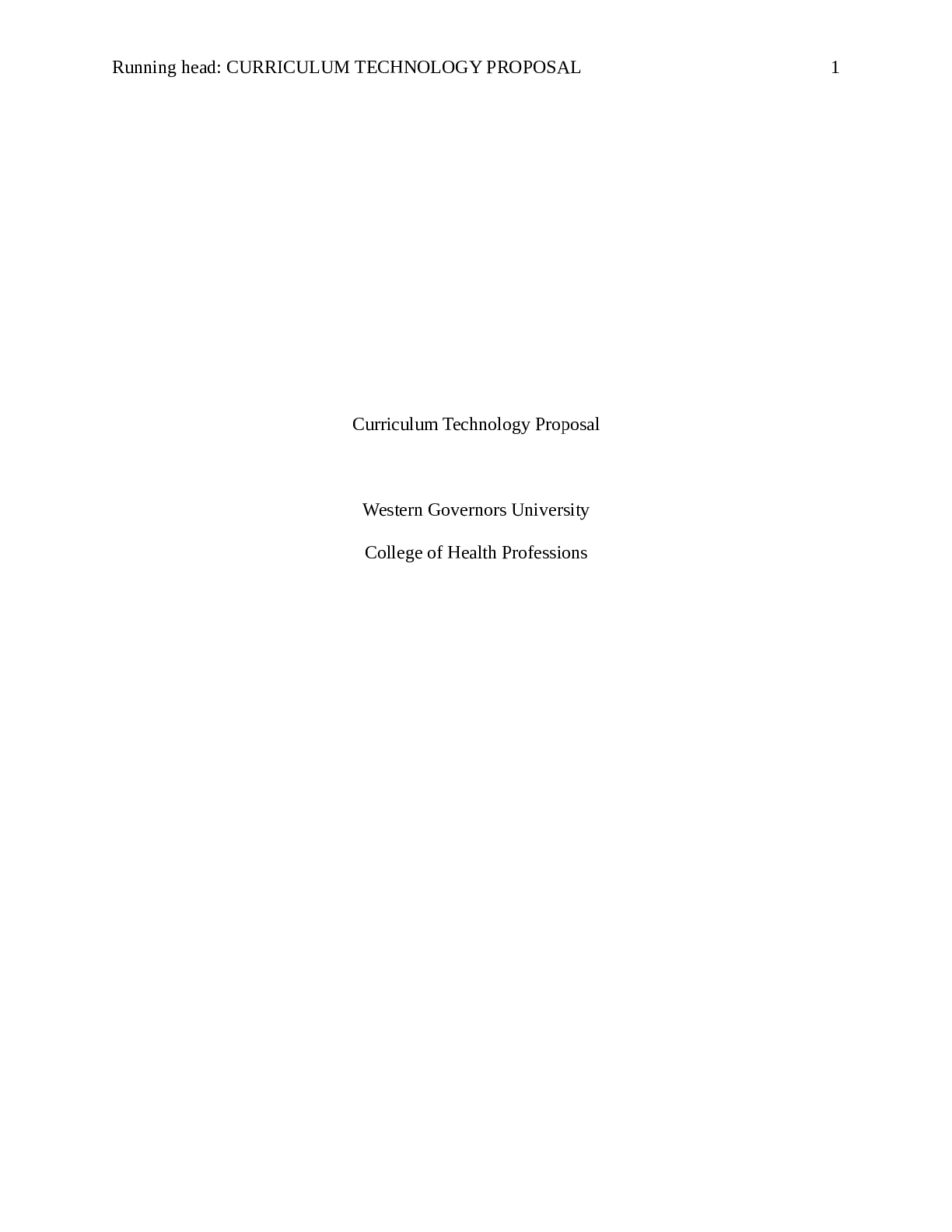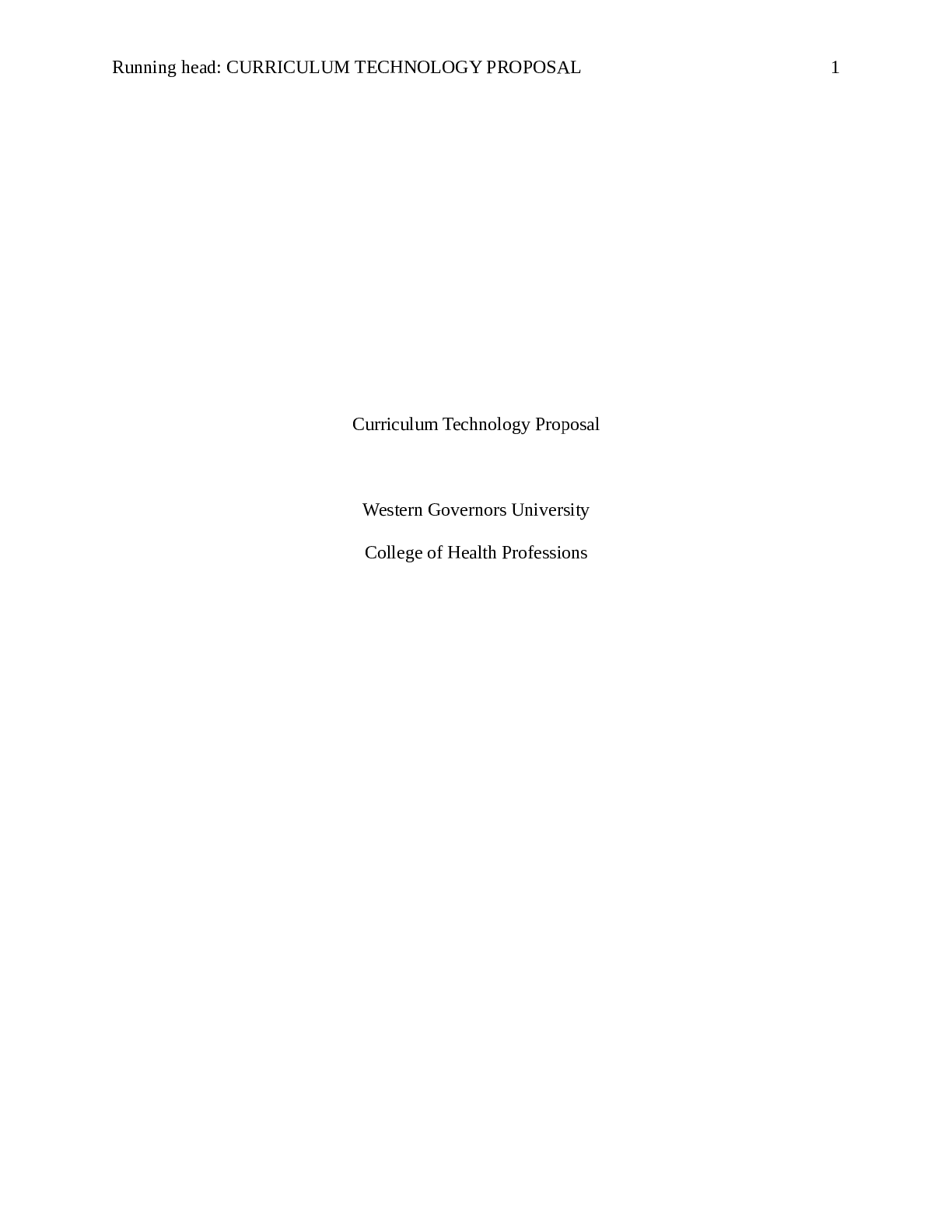CURRICULUM TECHNOLOGY PROPOSAL
Literature Review
Credible Sources
Refer to Appendix A: Table 1. Literature Review Summary Table.
Summary of Sources
Nursing education has undergone a paradigm shift from the traditional classroom setting
to a blended model of learning which incorporates not only textbooks and lectures, but also
technology-based methods to assist nurse educators in providing excellent learning experiences
for all learners across the spectrum. According to Raoufi, Manoochehri, Zarifsanaiey, &
Nikravanmofrad (2020), the introduction of technology-based methods to nursing education has
revolutionized higher education through the incorporation of Electronic Learning (e-learning). Elearning shifts the focus on to the learners, and how they interact with the classroom, nurse
educators, and educational setting through the internet and handheld devices such as laptops,
tablets, or even cellphones. Benefits of utilizing an e-learning modality include the easy access to
educational materials through online libraries, flexibility to complete education in a blended
setting, or completely online, reduced resources related to travel and commute costs, and positive
performance outcomes for learners.
Qiu (2019) and Voutilainen, Saaranen, & Sormunen (2017) concur that e-learning and
mobile application platforms “have been found to have primarily positive cognitive impacts,
have revolutionized nursing education,” and have resulted in better learning outcomes versus the
conventional learning approach for nursing education’s millennial group. E-learning can provide
learners an opportunity to continuously revisit course content either in their educational
institution’s library, or the comfort and convenience of their own home. For example, if the nurse
educator performs a particular skill in the skills lab, utilization of e-learning in to nursing
3
CURRICULUM TECHNOLOGY PROPOSAL
curriculum can allow learners to view videos on nursing skills remotely with their laptops,
mobile phones, or tablets, where they may be able to make more meaningful connections with
the material, and take the time to write down steps to a procedure. Essentially, having course
content available to all learners with the click of a button can be advantageous to student learning
outcomes and the future of nursing practice as a whole.
E-learning can be advantageous to nursing curriculum because information can quickly
and seamlessly be provided to learners in real time, and while on the go. It is no myth that
nursing textbooks can be quite cumbersome to carry around due to the sheer size of each
individual book. Fox (2019) purports that providing learners with an e-learning platform gives
learners the flexibility to access course content, since education has undergone the paradigm shift
which now encourages a blended learning environment, to provide learners with a plethora of
learning opportunities that are engaging, thought provoking, and fosters an environment that
encourages growth as a student nurse.
With the ushering in of technological advances in nursing education, nurse educators can
continuously assess current curriculum and adjust lesson plans, course content, and learning
objectives based on the needs of the entire class. For example, e-learning provides a rich
environment for all learning styles to engage and flourish in with the use of videos, audio
recordings, online articles, and visual aids. Fox (2019) and Elbasuony, Gangadharan, Janula,
Shylaja, & Gaber (2018) concur that current trends in a technologically advanced educational
environment, caters to all learning styles, and in actuality, has shaped nursing into a noble
profession, which ultimately impacts the quality and safety of patient care. The new millennium
of nursing students are inevitably exposed to technological advances, and nursing education
should therefore capitalize on these advances, to provide learners with situations which utilize
Read More


